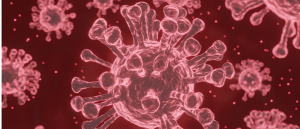The brightest X-ray in the world: delivering new insights for COVID-19, basic biology and disease

Scientists have used an X-ray source 100 billion times brighter than a hospital x-ray to view damage to human lungs caused by COVID-19.
A research team from University College London (UCL; UK) and the European Synchrotron Research Facility (ESRF; Grenoble, France) have utilized cutting-edge imaging technology called Hierarchical Phase-Contrast Tomography (HiP-CT) to scan donated human organs, including lungs from a COVID-19 donor. HiP-CT allows 3D mapping across a variety of scales, which is advantageous for clinicians as it allows visualization of the entire organ and the ability to zoom down to a cellular level.
HiP-CT uses X-rays provided by the ESRF, which is 100 billion times brighter than a hospital X-ray after a recent upgrade, the Extremely Brilliant Source upgrade (ESRF-EBS). This makes it the brightest X-ray in the world!
This intensity allows researchers to view blood vessels in an intact human lung which are five microns in diameter (a tenth of the diameter of a hair). In comparison, a clinical CT scan is only able to visualise blood vessels that are approximately 100 times larger, at around 1 mm.
Claire Walsh, the lead author of the study, explains: “The ability to see organs across scales like this will really be revolutionary for medical imaging. As we start to link our HiP-CT images to clinical images through AI techniques, we will – for the first time – be able to highly accurately validate ambiguous findings in clinical images. For understanding human anatomy this is also a very exciting technique, being able to see tiny organ structures in 3D in their correct spatial context is key to understanding how our bodies are structured and how they therefore function.”
 CRISPR-based diagnostics: expanding the toolbox against COVID-19
CRISPR-based diagnostics: expanding the toolbox against COVID-19
A diagnostic tool called Sensitive Enzymatic Nucleic Acid Sequence Reporter (SENSR) uses CRISPR technology to identify pathogens from their DNA or RNA sequences.
The use of HiP-CT by the researchers has deepened our understanding of severe COVID-19 infection in human lungs. They have been able to see how the infection ‘shunts’ blood between the two separate systems: the capillaries which oxygenate the blood and those which supply the lung tissue itself. The crosslinking prevents sufficient oxygenation of the patient’s blood, this mechanism had been hypothesised previously but not proven.
Another author of the study, Danny Jonigk explains that “by combining our molecular methods with the HiP-CT multiscale imaging in lungs affected by COVID-19 pneumonia, we gained a new understanding how shunting between blood vessels in a lung’s two vascular systems occurs in COVID-19 injured lungs and the impact it has on oxygen levels in our circulatory system.”
“This is a real breakthrough, as human organs have low contrast and so are very difficult to image in detail with the current available techniques,” Paul Tafforeau, lead scientist at the ESRF and study author, added. “ESRF-EBS has allowed us to go from deciphering the secrets of fossils to seeing the human body as never before.”
Building a human Organ Atlas
The UCL research team are using HiP-CT to create a Human Organ Atlas, with support from the Chan Zuckerberg Initiative (CA, USA), which has recently launched. The Atlas documents six donated control organs including a heart, lung, brain, two kidneys, a spleen and the lung of a deceased COVID-19 patient. In addition to this, there will be a control lung biopsy and a COVID-19 lung biopsy. The Atlas will be online for clinicians, surgeons and the interested public to access.
Peter Lee, who led the research, explains: “The Atlas spans a previously poorly explored scale in our understanding of human anatomy, which is the centimetre to micron scale in intact organs. Clinical CT and MRI scans can resolve down to just below a millimetre, whilst histology (studying cells/biopsy slices under a microscope), electron microscopy (which uses an electron beam to generate images) and other similar techniques resolve structures with sub-micron accuracy, but only on small biopsies of tissue from an organ. HiP-CT bridges these scales in 3D, imaging whole organs to provide new insights into our biological makeup.”
Future implications for other diseases and conditions
The capability of scale-bridging imaging from whole organ to cellular level makes the researchers confident that this technique could provide additional insights into numerous diseases such as cancer or Alzheimer’s Disease.
Willi Wagner (Heidelberg University Hospital, Germany), who also worked on this research, says that “HiP-CT is bridging the organ to tissue scale, tightly linking the clinical disciplines of radiology and pathology and providing never before seen structural data of 3D tissue architecture and disease patterns.”
Joseph Jacob, a radiologist at UCL Medicine and an author of this paper, concludes: “HiP-CT will allow the visualization of entire organs at a microscopic level in healthy ageing and disease. This will introduce a third dimension to histopathological imaging. Such insights when applied to routine healthcare imaging may transform the way radiologists like me interpret the imaging of our patients. This transformative technology could improve the identification of unsuspected early disease and inform how a single disease interacts across different organs of the body.”
Using this new imaging technology, the team hope to expand the Human Organ Atlas to contain different diseases that affect organs, which can be used by clinicians to assist with the diagnosis or treatment of diseases. They also hope to utilize machine learning and artificial intelligence in calibrating CT and MRI scans as well as advancing our understanding of clinical imaging to enable faster diagnoses with improved accuracy.